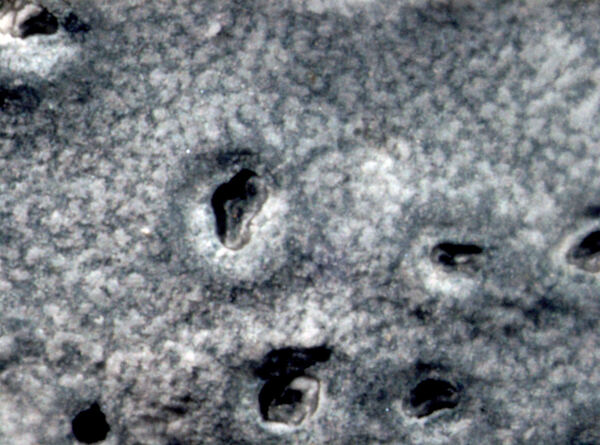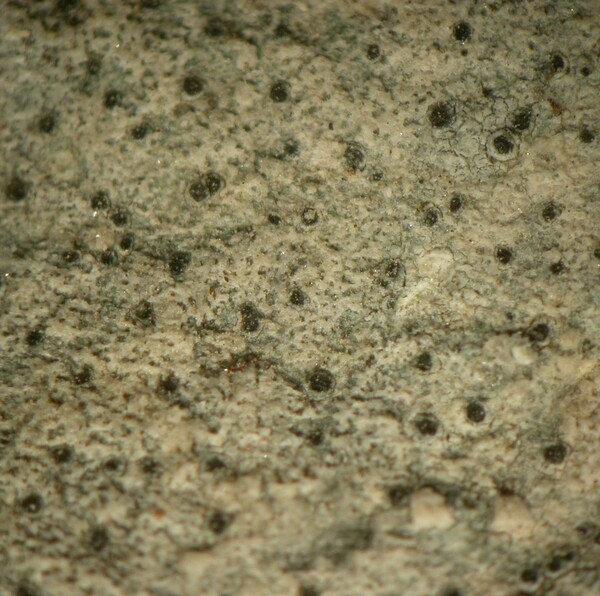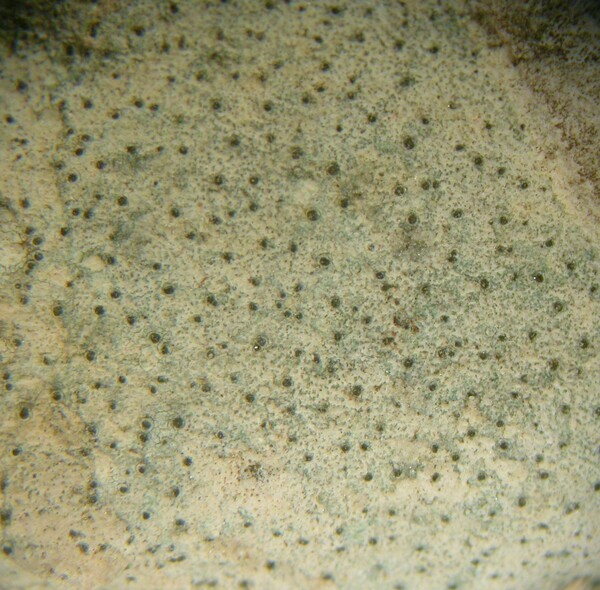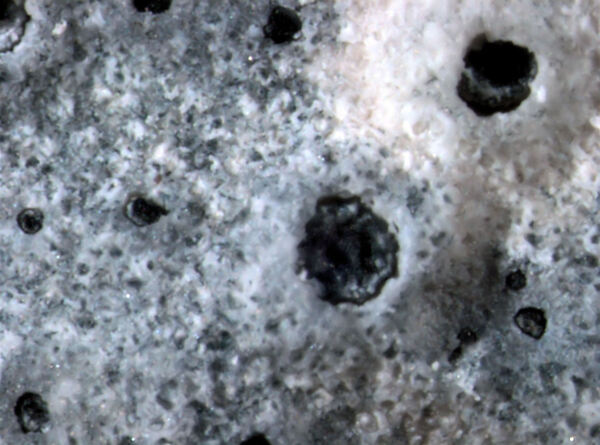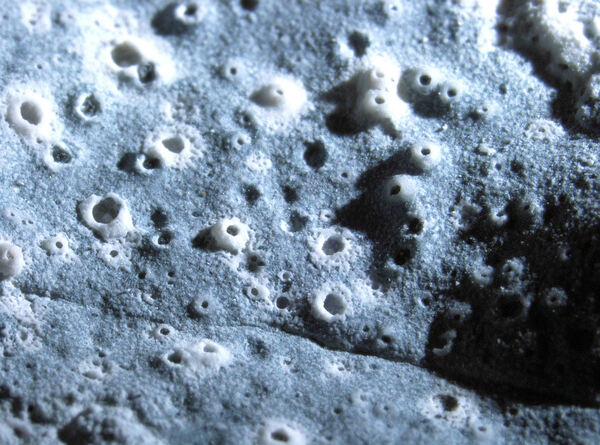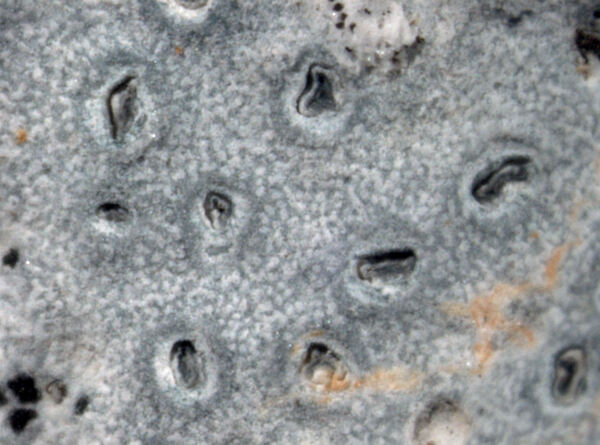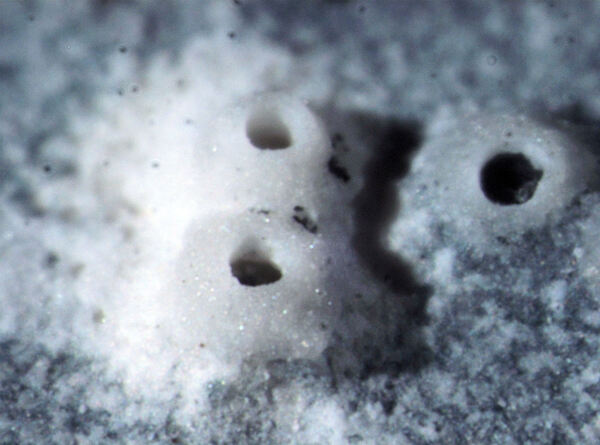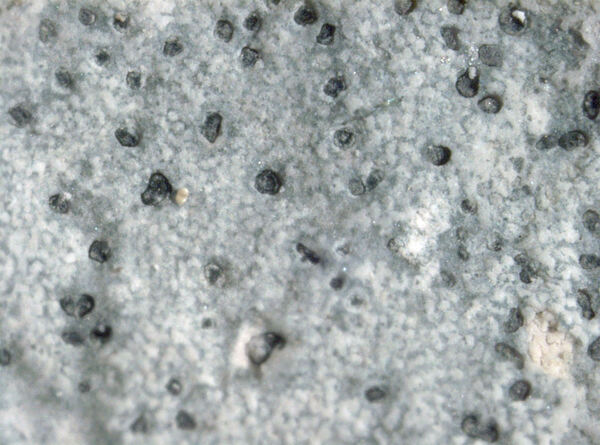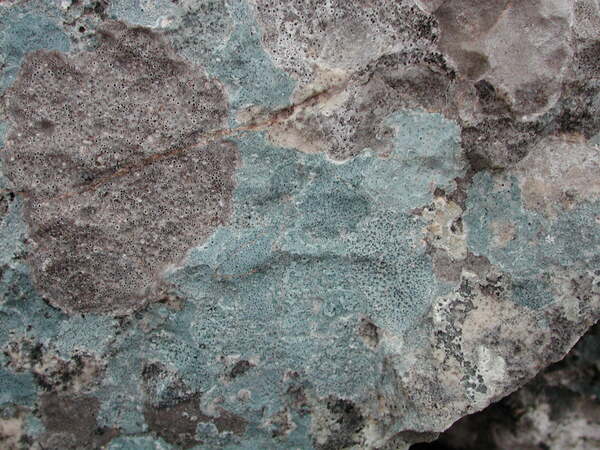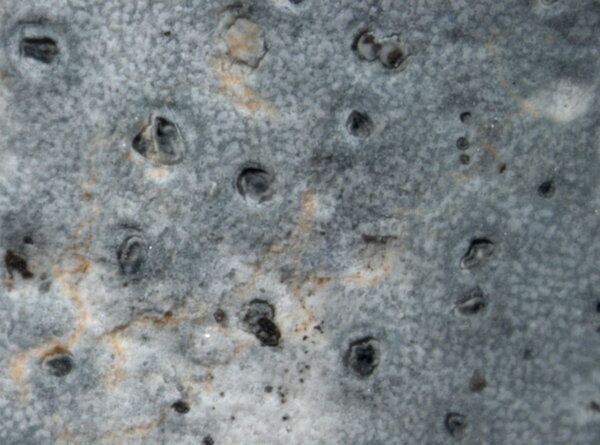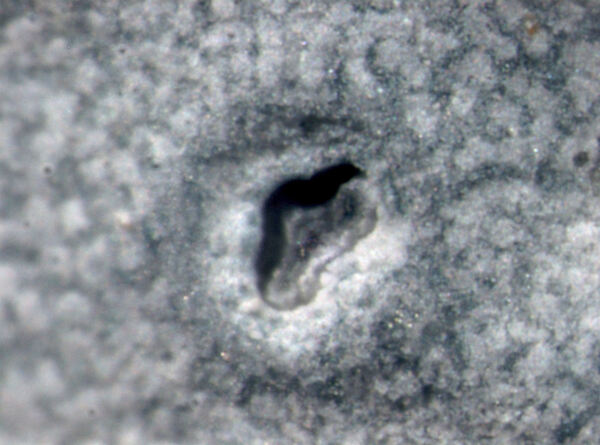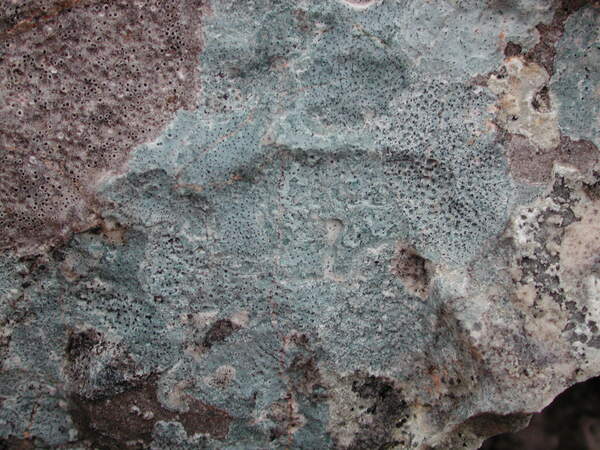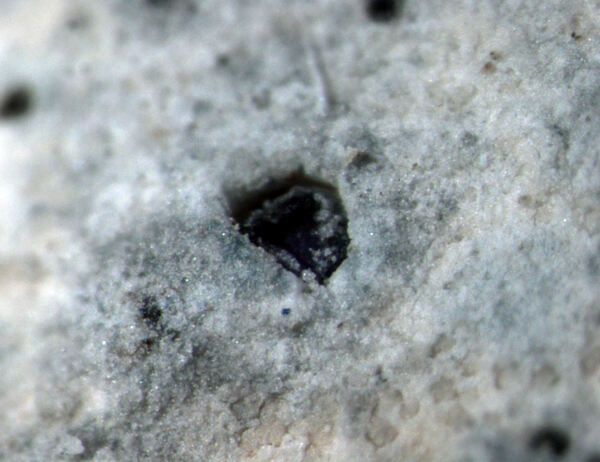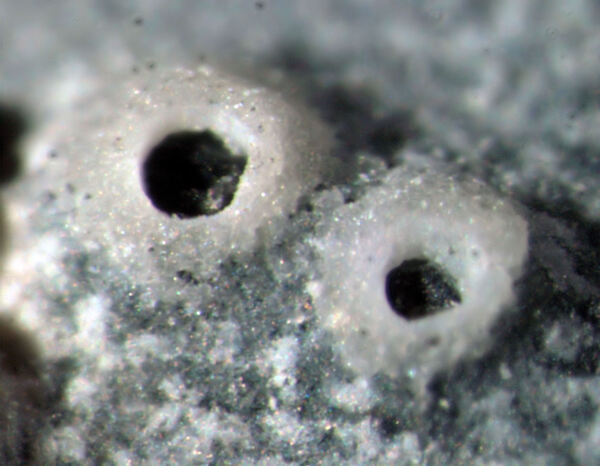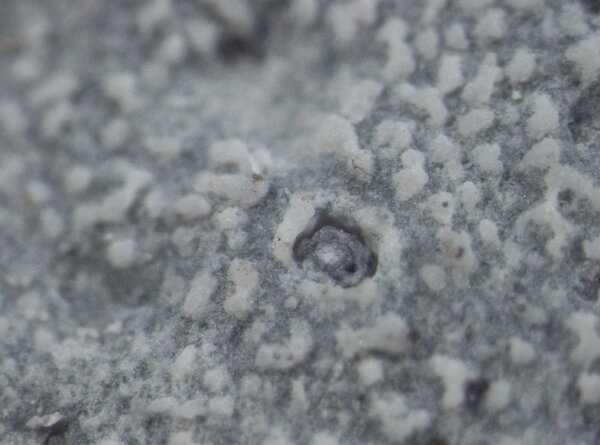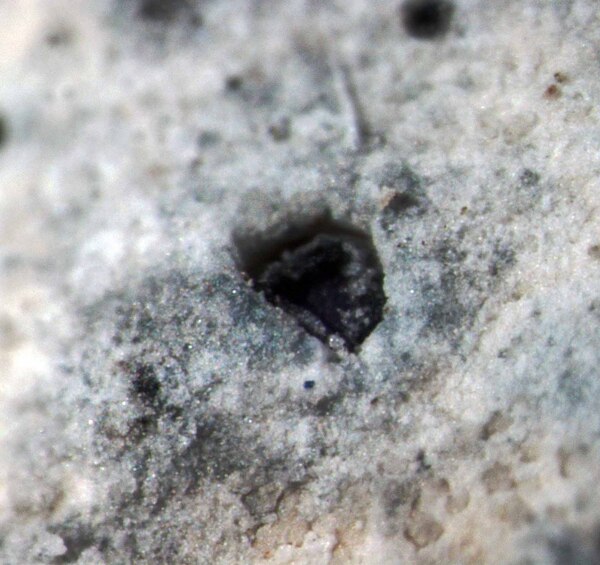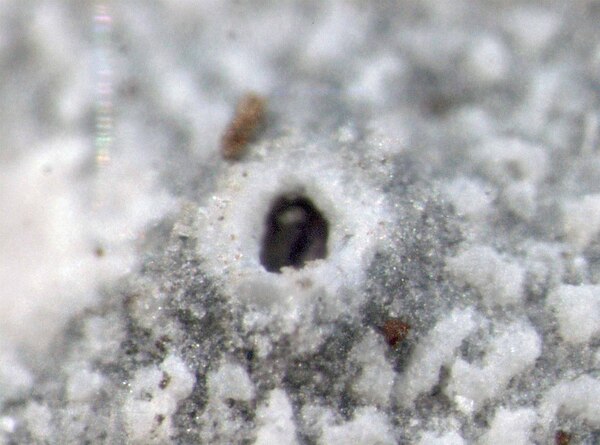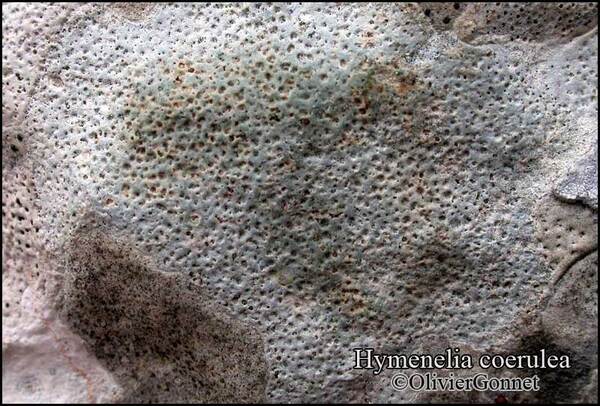Hymenelia coerulea A. Massal.
Symmicta Lich.: 25, 1855.
Synonyms: Aspicilia coerulea (A. Massal.) Dalla Torre & Sarnth.; Hymenelia hiascens A. Massal.; Hymenelia prevostii var. coerulescens Kremp.; Lecanora cantiana (Garov.) Zahlbr.; Lecanora coerulea (A. Massal.) Nyl.; Lecanora pseudocoerulea Zahlbr.; Manzonia cantiana Garov.
Distribution: N - Frl (TSB 3751), Ven (Nascimbene & Marini 2007), TAA (Nascimbene 2008b, Spitale & Nascimbene 2012, Nascimbene & al. 2022), Lomb. C - Marc (Nimis & Tretiach 1999), Abr (Nimis & Tretiach 1999).
Description: Thallus crustose, endosubstratic, continuous to very finely cracked, pale blue when dry, blue when wet, usually well-delimited, sometimes with a thin whitish prothallus. Apothecia 0.2-0.4 mm across, immersed in the thallus and in the rock, with a blue-grey to black, epruinose disc and a soon excluded proper margin. Epithecium blue, N+ purple-red, K-; hymenium pale blue; paraphyses mostly simple, moniliform in upper part, slightly swollen at apex; hypothecium colourless. Asci 8-spored, cylindrical-clavate, the outer coat I+ blue, but the inner walls and apical dome K/I-. Ascospores 1-celled, hyaline, broadly ellipsoid to subglobose, 6-15 x 5-11 µm, often poorly developed. Photobiont chlorococcoid (Asterochloris), the cells <15 µm wide. Spot tests: thallus K-, C-, KC-, P-, UV-; pigmented parts of thallus N+ purple. Chemistry: without lichen substances.
Note: on steeply inclined surfaces of hard calciferous rocks, including moderately dolomitic, hard limestone; certainly widespread and locally abundant throughout the Alps, with optimum in the montane and subalpine belts; the record from Abruzzo is the southernmost known in Italy. The records from Campania by Aprile & al. (2003b) are from low altitudes, and appear dubious to me.
Growth form: Crustose endolithic
Substrata: rocks
Photobiont: green algae other than Trentepohlia
Reproductive strategy: mainly sexual
Commonnes-rarity: (info)
Alpine belt: extremely common
Subalpine belt: rather rare
Oromediterranean belt: very rare
Montane belt: extremely rare
Submediterranean belt: absent
Padanian area: absent
Humid submediterranean belt: absent
Humid mediterranean belt: absent
Dry mediterranean belt: absent
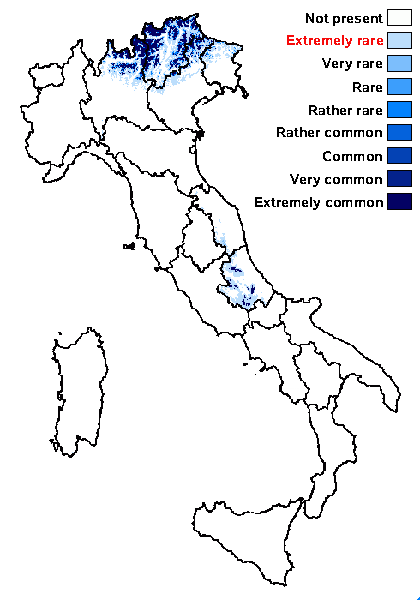
Predictive model
Herbarium samples
Growth form: Crustose endolithic
Substrata: rocks
Photobiont: green algae other than Trentepohlia
Reproductive strategy: mainly sexual
Commonnes-rarity: (info)
Alpine belt: extremely common
Subalpine belt: rather rare
Oromediterranean belt: very rare
Montane belt: extremely rare
Submediterranean belt: absent
Padanian area: absent
Humid submediterranean belt: absent
Humid mediterranean belt: absent
Dry mediterranean belt: absent

Predictive model
| Herbarium samples |
 INDEX FUNGORUM
INDEX FUNGORUM
 GBIF
GBIF
 DOLICHENS
DOLICHENS
